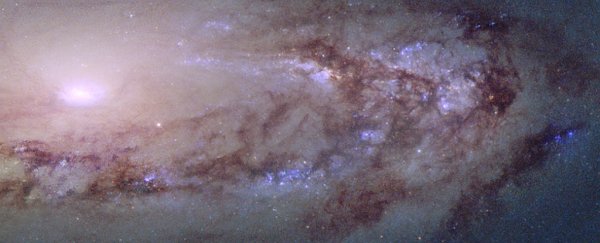NASA has expanded its image catalogue for Messier deep-sky objects by 12 objects, bringing the total to 76 - and showcasing how far we've come since 18th century French astronomer Charles Messier started cataloguing strange, fuzzy objects in the sky.
Messier was a comet-hunter - the pursuit and discovery of comets was, at the time, an excellent way to make a name for oneself in the field of astronomy.
But the telescopes he had at his disposal were a far cry from the technology we have available today, and Messier often found his efforts frustrated by seemingly comet-like objects - faint and blurry, yet not moving in the way a comet should.
He started creating a catalogue of these objects as "not-comets" and therefore not of interest to his field of research - not realising the value this catalogue of 110 objects would have for future generations of astronomers.
Not only were they not comets, these mysterious blurs weren't even in the Solar System - and some were even far beyond the Milky Way. Messier was seeing distant nebulae, globular clusters of stars, and galaxies, some of which were millions of light-years away.
 Globular cluster Messier 62 (NASA, ESA, STScI, S. Anderson & J. Chaname)
Globular cluster Messier 62 (NASA, ESA, STScI, S. Anderson & J. Chaname)
And, thanks to the Hubble Space Telescope, in recent years we've been able to discover that Messier's list contains some of the most mesmerisingly beautiful objects in the sky. You may already be familiar with some of them.
Included in the catalogue are the Crab Nebula, displaying a complex web of shockwaves from a violent explosion that tore a star apart; the Orion Nebula, cradling a nursery of very young stars; Eagle Nebula, containing the iconic Pillars of Creation; and the breathtaking Whirlpool Galaxy, situated at the perfect angle to showcase the incredible arms of a spiral galaxy.
 Spiral galaxy Messier 95 (NASA, ESA, STScI, D. Calzetti & R. Chandar)
Spiral galaxy Messier 95 (NASA, ESA, STScI, D. Calzetti & R. Chandar)
NASA's new entries into the catalogue this month are mainly galaxies and two globular clusters - globe-shaped collections of older stars, usually found in galactic halos.
- M58, a barred spiral galaxy located some 62 million light-years away in the direction of the constellation Virgo, a member of the Virgo cluster;
- M59, a large elliptical galaxy around 60 million light-years away, in the Virgo Cluster;
- M62, an irregular globular cluster within the Milky Way galaxy, located in the constellation Ophiuchus;
- M75, a globular cluster within the Milky Way galaxy, located in the constellation Sagittarius;
- M86, an elliptical or lenticular galaxy of the Virgo Cluster, around 52 million light-years away;
- M88, a spiral galaxy of the Virgo Cluster located around 47 million light-years away;
- M89, an almost circular elliptical galaxy of the Virgo Cluster around 50 million light-years away;
- M90, a spiral galaxy of the Virgo Cluster, located around 59 million light-years away;
- M95, a barred spiral galaxy located around 33 million light-years away in the constellation of Leo;
- M98, a faint spiral galaxy of the Virgo Cluster, located around 44 million light-years away;
- M108, a barred spiral galaxy, located 46 million light-years away in the constellation of Ursa Major; and
- M110, an elliptical satellite galaxy of the Andromeda galaxy, only around 2.7 million light-years away.
 Spiral galaxy Messier 88 (NASA, ESA, STScI and M. Stiavelli)
Spiral galaxy Messier 88 (NASA, ESA, STScI and M. Stiavelli)
You can check out the full catalogue for yourself here, and more images on NASA's Messier Flickr gallery here.
